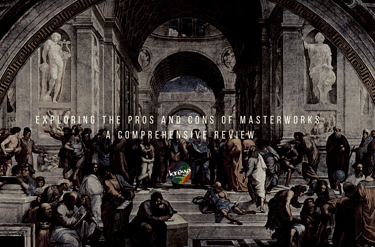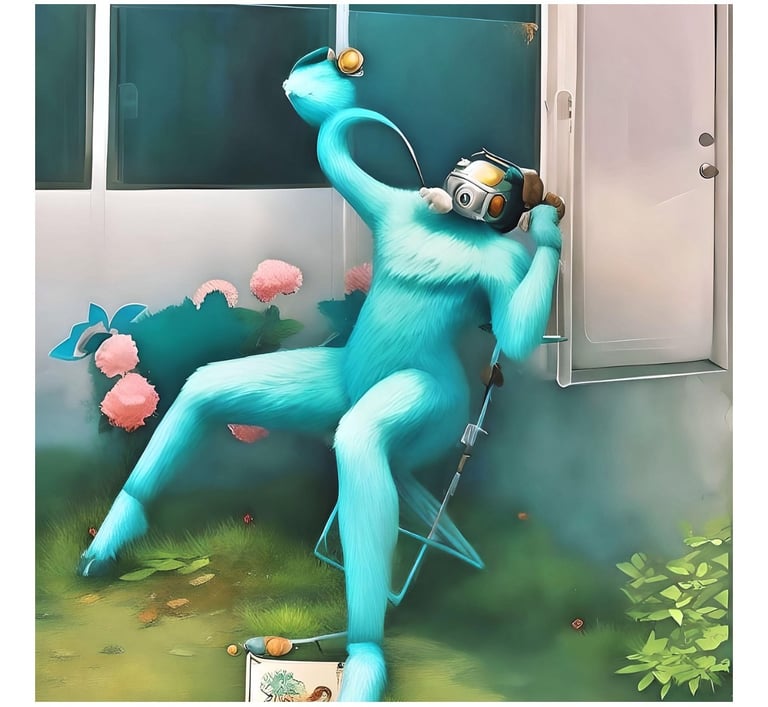Exploring the Pros and Cons of Masterworks: A Comprehensive Review
ART


Introduction
Masterworks, the revolutionary art platform, has garnered immense attention from art enthusiasts, investors, and individuals looking to engage with the world of fine art. In this comprehensive review, we will delve into the pros and cons of Masterworks, exploring its unique features, investment potential, and the opportunity it offers to invite friends and family to skip the waitlist.
Section 1: The Pros of Masterworks
1. Diversification of Investment Portfolio
One of the key advantages of Masterworks is its ability to offer investors an opportunity to diversify their portfolio beyond traditional assets. Fine art has historically demonstrated resilience during economic downturns, making it an appealing addition to a well-rounded investment strategy.
2. Access to Masterpieces
Masterworks grants individuals access to artworks that were previously only within the reach of elite collectors. This democratization of art ownership allows investors to share in the cultural and aesthetic value of renowned masterpieces.
3. Potential for Appreciation
Artworks have the potential to appreciate significantly over time, and Masterworks aims to capitalize on this potential by allowing investors to participate in the art market's growth. If an artwork's value increases, investors may benefit from capital gains upon its sale.
4. Passive Income through Dividends
Masterworks offers investors the unique opportunity to earn dividends from the artworks they own. As the artworks generate revenue through exhibitions, licensing, or other means, investors can receive a portion of these earnings.
5. Education and Community
Masterworks provides an educational platform that enables investors to learn about the art market, artists, and various artistic movements. Additionally, the Masterworks community allows art enthusiasts to connect, share insights, and engage in discussions.
Section 2: The Cons of Masterworks
1. Illiquidity
While art can be a valuable long-term investment, it's important to recognize that art assets can be illiquid compared to traditional financial assets. Selling an artwork may take time, and investors should be prepared for potential delays in accessing funds.
2. Market Volatility
The art market, like any other investment market, can experience fluctuations in value. While some artworks may appreciate significantly, others might not perform as well, leading to uncertainty about returns.
3. Limited Control
Investors in Masterworks don't have direct control over the management and decisions regarding the artworks. Decisions related to sales, exhibitions, and valuations are made by Masterworks, potentially limiting investors' input.
4. Fees and Costs
Masterworks charges various fees, including management fees and performance-based fees. These fees can impact the overall returns that investors realize from their investments.
Section 3: The Invitation Opportunity
Masterworks offers an intriguing opportunity for investors to invite friends and family to skip the waitlist and gain immediate access to the platform. By utilizing your referral link (https://www.masterworks.com/invite/H1RDYZB), you extend a hand to others who are eager to explore the world of art investment. This referral program not only benefits your acquaintances but can also provide you with rewards for each successful referral.
Conclusion
In the realm of alternative investments, Masterworks emerges as a promising platform that marries the worlds of art and finance. As we've explored, its pros include diversification, access to art masterpieces, potential for appreciation, passive income, and a strong educational community. However, the cons encompass illiquidity, market volatility, limited control, and associated fees. The opportunity to invite friends and family to join the platform further extends the reach of this exciting venture. Ultimately, your decision to engage with Masterworks should be guided by a thorough understanding of both its advantages and limitations, aligning with your investment goals and risk tolerance.
art (n.)
early 13c., "skill as a result of learning or practice," from Old French art (10c.), from Latin artem (nominative ars) "work of art; practical skill; a business, craft," from PIE ar(ə)-ti- (source also of Sanskrit rtih "manner, mode;" Greek artizein "to prepare"), suffixed form of root ar- "to fit together." Etymologically akin to Latin arma "weapons" (see arm (n.2)).
In Middle English usually with a sense of "skill in scholarship and learning" (c. 1300), especially in the seven sciences, or liberal arts. This sense remains in Bachelor of Arts, etc. The meaning "human workmanship" (as opposed to nature) is from late 14c. The meaning "system of rules and traditions for performing certain actions" is from late 15c. The sense of "skill in cunning and trickery" is attested by late 16c. (the sense in artful, artless). The meaning "skill in creative arts" is recorded by 1610s; especially of painting, sculpture, etc., from 1660s.
In science you must not talk before you know. In art you must not talk before you do. In literature you must not talk before you think. [Ruskin, "The Eagle's Nest," 1872]
Supreme art is a traditional statement of certain heroic and religious truths, passed on from age to age, modified by individual genius, but never abandoned. The revolt of individualism came because the tradition had become degraded, or rather because a spurious copy had been accepted in its stead. [William Butler Yeats, journal, 1909]
Expression art for art's sake (1824) translates French l'art pour l'art. First record of art critic is from 1847. Arts and crafts "decorative design and handcraft" is from the Arts and Crafts Exhibition Society, founded in London in 1888.




















